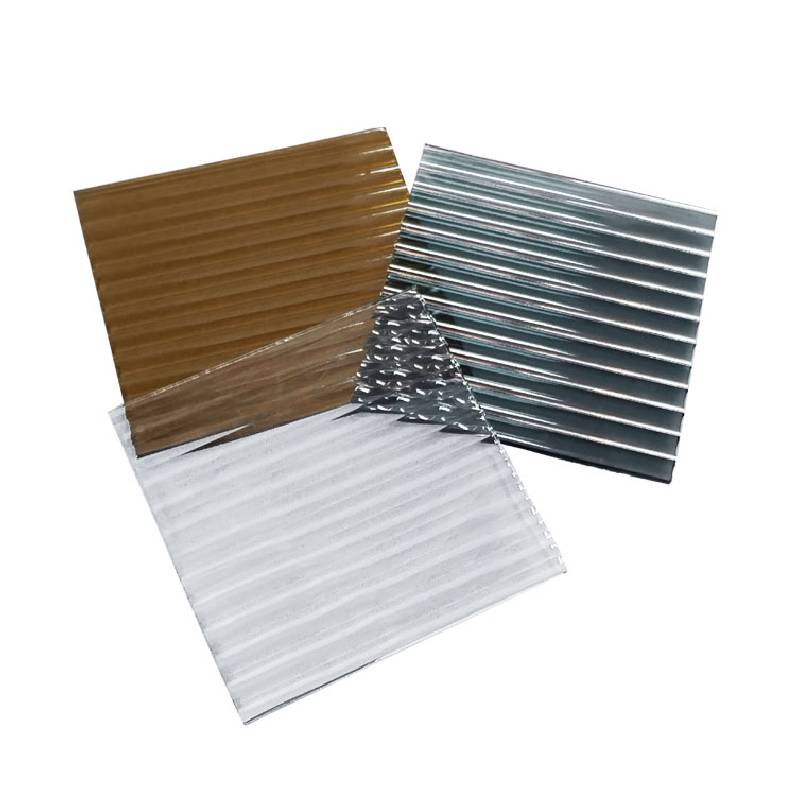Reflective Gray Glass A Modern Aesthetic
In the realm of architecture and interior design, materials play a pivotal role in shaping spaces and creating atmospheres. Among these materials, reflective gray glass has emerged as a favored choice for modern designs, offering a unique blend of functionality and style. This article delves into the characteristics, applications, and aesthetic appeal of reflective gray glass, showcasing why it has become a significant element in contemporary architecture.
Reflective gray glass is characterized by its metallic finish that provides a mirror-like surface, allowing it to reflect light while maintaining a sleek appearance. The gray tint adds an element of sophistication, making it versatile for various applications, from facades to interior partitions. This type of glass serves not only as a structural component but also as a decorative feature that can enhance the visual appeal of any space.
One of the most compelling advantages of reflective gray glass is its ability to control light and heat. In urban environments where sunlight can be harsh and overwhelming, reflective glass helps to minimize glare and heat gain. This not only contributes to a more comfortable indoor climate but also reduces the need for extensive air conditioning, aligning with sustainable building practices. By cutting down on energy costs, reflective gray glass proves to be an eco-friendly option that resonates with environmentally conscious designers and homeowners.
reflective gray glass
In addition to its practical benefits, reflective gray glass plays a significant role in shaping the aesthetics of a space. Its reflective nature creates a dynamic interplay between the interior and exterior environments. This quality allows for a seamless blend between the built environment and nature, as the glass reflects surrounding landscapes, lighting conditions, and even the changing seasons. When utilized in large expanses, such as skyscrapers or modern homes, reflective gray glass can create visually striking compositions that draw the eye and invite curiosity.
Moreover, the use of reflective gray glass is not limited to large-scale architecture. In interior design, this material can be employed in various applications, such as sliding doors, mirrors, and decorative accents. The sleek surface can make small spaces appear larger by reflecting light and creating an illusion of depth, a valuable attribute in urban living situations where space is at a premium. Additionally, combining reflective gray glass with other materials, like wood or stone, can create a balanced and harmonious aesthetic, blending modernity with organic elements.
However, while reflective gray glass offers numerous advantages, it’s essential to consider its placement and context. Excessive use of reflective surfaces can lead to over-glare, particularly in settings that require subtlety and warmth. Thoughtful integration is key — designers must strike a balance between reflective glass and other materials to achieve an inviting environment without compromising functionality.
In conclusion, reflective gray glass stands out as a versatile and aesthetically pleasing choice in modern architecture and interior design. Its ability to control light, enhance energy efficiency, and offer a dynamic visual experience makes it a favorite among architects and designers alike. As we continue to innovate in the built environment, reflective gray glass is likely to remain a significant player, seamlessly merging functionality with contemporary style, and shaping the way we experience our surroundings.
 Afrikaans
Afrikaans  Albanian
Albanian  Amharic
Amharic  Arabic
Arabic  Armenian
Armenian  Azerbaijani
Azerbaijani  Basque
Basque  Belarusian
Belarusian  Bengali
Bengali  Bosnian
Bosnian  Bulgarian
Bulgarian  Catalan
Catalan  Cebuano
Cebuano  Corsican
Corsican  Croatian
Croatian  Czech
Czech  Danish
Danish  Dutch
Dutch  English
English  Esperanto
Esperanto  Estonian
Estonian  Finnish
Finnish  French
French  Frisian
Frisian  Galician
Galician  Georgian
Georgian  German
German  Greek
Greek  Gujarati
Gujarati  Haitian Creole
Haitian Creole  hausa
hausa  hawaiian
hawaiian  Hebrew
Hebrew  Hindi
Hindi  Miao
Miao  Hungarian
Hungarian  Icelandic
Icelandic  igbo
igbo  Indonesian
Indonesian  irish
irish  Italian
Italian  Japanese
Japanese  Javanese
Javanese  Kannada
Kannada  kazakh
kazakh  Khmer
Khmer  Rwandese
Rwandese  Korean
Korean  Kurdish
Kurdish  Kyrgyz
Kyrgyz  Lao
Lao  Latin
Latin  Latvian
Latvian  Lithuanian
Lithuanian  Luxembourgish
Luxembourgish  Macedonian
Macedonian  Malgashi
Malgashi  Malay
Malay  Malayalam
Malayalam  Maltese
Maltese  Maori
Maori  Marathi
Marathi  Mongolian
Mongolian  Myanmar
Myanmar  Nepali
Nepali  Norwegian
Norwegian  Norwegian
Norwegian  Occitan
Occitan  Pashto
Pashto  Persian
Persian  Polish
Polish  Portuguese
Portuguese  Punjabi
Punjabi  Romanian
Romanian  Russian
Russian  Samoan
Samoan  Scottish Gaelic
Scottish Gaelic  Serbian
Serbian  Sesotho
Sesotho  Shona
Shona  Sindhi
Sindhi  Sinhala
Sinhala  Slovak
Slovak  Slovenian
Slovenian  Somali
Somali  Spanish
Spanish  Sundanese
Sundanese  Swahili
Swahili  Swedish
Swedish  Tagalog
Tagalog  Tajik
Tajik  Tamil
Tamil  Tatar
Tatar  Telugu
Telugu  Thai
Thai  Turkish
Turkish  Turkmen
Turkmen  Ukrainian
Ukrainian  Urdu
Urdu  Uighur
Uighur  Uzbek
Uzbek  Vietnamese
Vietnamese  Welsh
Welsh  Bantu
Bantu  Yiddish
Yiddish  Yoruba
Yoruba  Zulu
Zulu 

